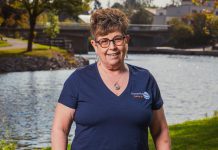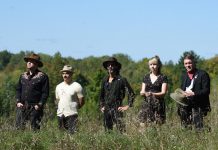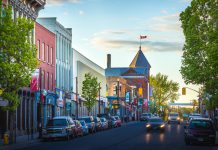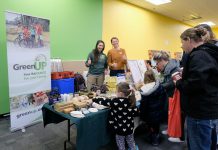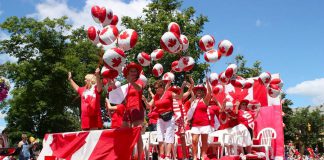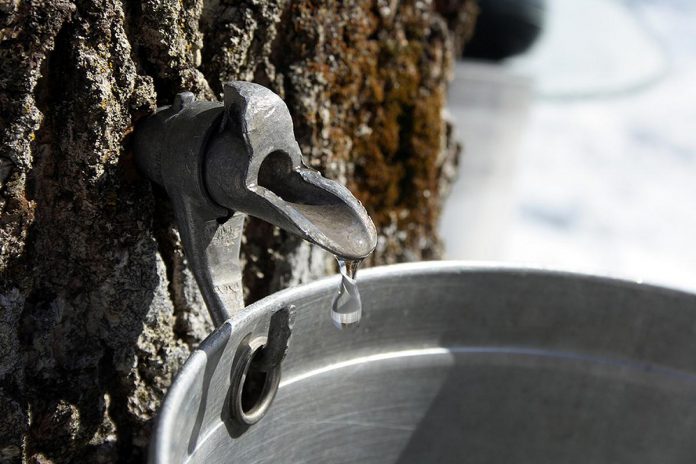
Trees and water provide an example of a truly reciprocal relationship where both give and receive. This relationship between trees and water also provides an example of our own human relationships and of relationships threatened by climate change.
While it varies by species, live trees are approximately 50 per cent water by weight. All trees require water in order to breathe (transpiration), absorb nutrients from the soil through roots, and help to create food for the tree (photosynthesis).
At the same time, trees act as filters to improve water quality, absorb excess rainfall, and prevent sediment from eroding into waterways. When trees absorb water, nutrients, and minerals from their roots to their leaves, or when trees move newly created tree food from their leaves to their roots, water is transformed into the blood of the tree (xylem or phloem), more commonly known as sap (phloem).
Sugar maples may create the most popular kind of sap. As a result of their elevated levels of sap production, the sugar maple is responsible for the sticky substance that covers stacks of pancakes on Saturday mornings.
For myself, maple sap (and syrup) brings me to a place in my heart that reaches far beyond a pancake breakfast. The collection of sap and the creation of syrup is a tradition that connects me to my ancestors and to the land that I have the privilege of being a guest upon.
While I was too young to hold the memories themselves, I have listened intently to the stories told about my grandfather, Elwin Garbutt, who spent many years boiling sap and supplying sweet syrup to the community at large. Exploring the maple bush as a child, I was in awe of the relics left behind: rusted buckets, a pile of boards that was once the sugar shack, and an old pipe that once funnelled large amounts of sap from one side of the bush to the other.
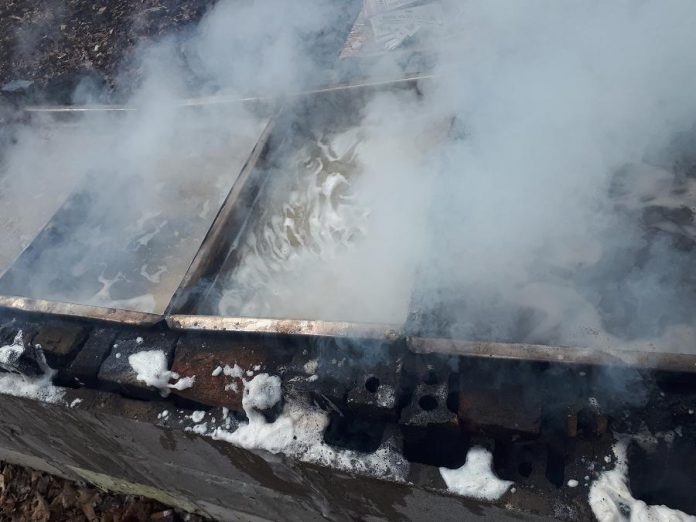
My grandfather tapped roughly 4,000 trees each year, a capitalist venture no doubt. Through these stories, however, respect for the land was instilled in me, especially the story of how my grandfather stopped this operation when the trees told him they were getting sick. For over 40 years the bush was left untapped, until a few years ago when the trees returned to health and memories from the trees came forward through their sweet water.
As a guest on this land with settler ancestors, I acknowledge that the creation of maple syrup was learned from Anishhinaabe people who call this land home. Ziigwan, as early spring is known in Anishinaabemowin, is a celebratory time of gratitude that aligns with the maple sap collection season. This is a time of reciprocity between water, trees, and humans.
“This time of year teaches us a lot about what it means to bring new life forward,” shares Kelly King, outreach and education coordinator at TRACKS (Trent Aboriginal Cultural Knowledge and Science) Youth Program.
“The sweet water that comes to us from our tree relatives showcases how integral water is to renewal and sustenance for all beings,” King adds. “Just like newborn babies, this renewal of life arrives in the form of rushing water, teaching us about what it means to care for and tend to the continuation of life.”
In a couple of weeks, I will be tapping these trees again, spending time listening to the stories told by the trees, and sending gratitude to the gifts of spring. But as the impacts of climate change are felt more and more each day, I wonder if my grandchildren will have the opportunity to do the same.
In 2012, Ontario’s former environmental commissioner Gord Miller released a special report on biodiversity in Ontario that led to conversations surrounding the potential future loss of maple trees within southern Ontario due to impacts of climate change.
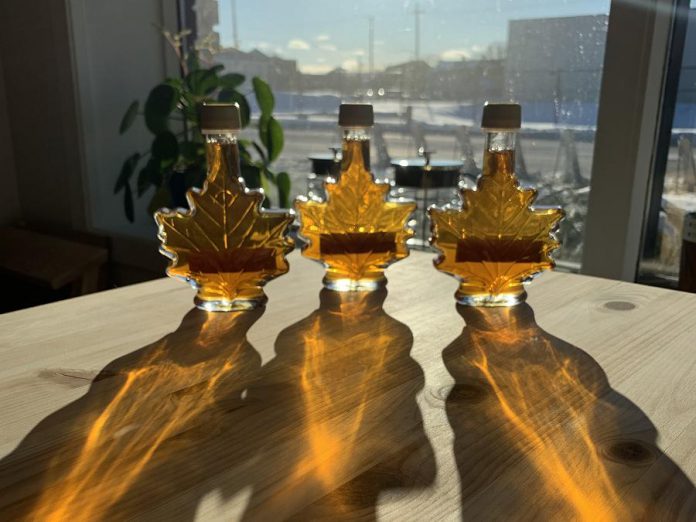
More recent research continues to sound an alarm regarding the longevity and growth of maple trees.
“The Ontario Ministry of Natural Resources and Forestry’s own scientific report acknowledges that the viability of the maple forests of southern Ontario may be threatened by expected climate change,” writes Miller in his report. “Yet they do not incorporate climate change models into their forest management planning. Neither do they have plans to mitigate these impacts.”
“The optimal climate conditions of temperature and rainfall that support the maple forests of Ecozone 6 shift much further north under likely scenarios within just a few decades,” continues Miller. “Existing maple trees will be stressed by heat and drought and there will be poor to no regeneration of the forest. We need forestry management plans that mitigate these impacts.”
More specifically, it is the disruption of the relationship between trees and water, through drought, that will remove water from the trees’ vital functions. This disruption is predicted to destabilize the maple tree populations that surround us and that gives us the gift of maple syrup.
I encourage you to remember this the next time you are enjoying a pancake dripping in sweet water.
Remember that climate change may take away this staple of breakfast joys, limit cultural identity and ceremony, and diminish relationships between trees, water, and humans — unless we take action collectively.
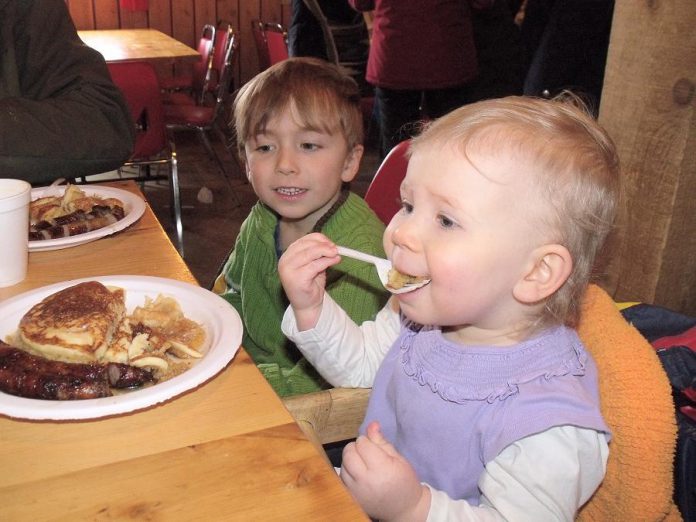
Please let this increased awareness fuel your own climate action and your demands for climate action from our leaders.
TRACKS offers spring activity books and spring boxes that will both include teachings about maple sap from Anishinaabe and Eurocentric scientific perspectives. Check out their website at www.tracksprogram.ca to learn more about how you can order your own.
For more information about the roots of maple syrup within this region, watch the series of videos at the National Centre for Collaboration in Indigenous Education (NCCIE) hosted by First Nations University of Canada at www.nccie.ca/videos/ziinzibaakwadgummig-the-sugar-bush/ or view them below.
VIDEO: Ziinzibaakwadgummig – The Sugar Bush
A version of this story was originally published in 2021.






